This article was medically reviewed by Ray Schilling, MD and by wikiHow staff writer, Hunter Rising. Dr. Schilling is a retired Physician in British Columbia, Canada. He has practiced Family Medicine in Canada for over 16 years. He received his MD from the Eberhard-Karls-University Medical School in 1971. He is a member of the Canadian Society of Clinical Hypnosis and the American Academy of Anti-Aging Medicine, and he has been on the Worker’s Compensation Board of British Columbia as a medical advisor.
There are 15 references cited in this article, which can be found at the bottom of the page.
wikiHow marks an article as reader-approved once it receives enough positive feedback. This article has 16 testimonials from our readers, earning it our reader-approved status.
This article has been viewed 1,497,702 times.
Getting a cut can cause a lot of pain and leave the area inflamed or sore. Fortunately, there are many natural antiseptics you can try at home to hopefully heal your wound. Since cuts heal better when they’re kept moist, applying a natural topical cream or ointment on them can speed up your recovery. However, you should see a doctor if your cut doesn't stop bleeding, if it's deeper than 1⁄4 inch (0.64 cm), or if you notice signs of infection.
Steps
Cleaning the Wound
-
1Wash and dry your hands. Rinse your hands under clean water and lather them with mild hand soap. Then scrub your hands for at least 20 seconds to kill any germs and bacteria before rinsing the soap off. Pat your hands dry on a clean towel before caring for your wound.[1]
- You can also use hand sanitizer if you aren’t able to wash your hands. Wait until the sanitizer evaporates completely, or else it may sting if you touch your cut.
- If possible, put on disposable gloves before you touch the wound so you don’t transfer any germs.
-
2Hold a clean cloth or gauze pad against the wound to stop the bleeding. Choose a lint-free cloth you don’t mind throwing away or a large piece of gauze that covers the entire cut. Gently press the cloth down on your wound and apply pressure just above the cut. Replace the cloth or gauze if blood soaks through it and keep applying constant pressure until you stop bleeding.[2]
- Elevate the cut if possible to reduce blood flow to your wound so it stops sooner.
Warning: If you are still bleeding after 10 minutes, call a doctor since your cut may be more severe.[3]
Advertisement -
3Rinse the cut with running water for at least 5 minutes. Hold your cut underneath cool or lukewarm water from your sink or shower. Move the cut back and forth through the stream so you can rinse out any blood or dirt that’s still stuck inside. Keep the water running over your cut for 5–10 minutes to help prevent infection.[4]
- Avoid rubbing or touching your cut since it could open back up and start bleeding again.
- Don’t soak your cut in standing water since you could reintroduce bacteria. If you need to, use a cup to pour clean water over your wound instead.
-
4Sterilize the wound with gauze soaked in saline solution. Wet a large gauze pad with saline solution and lightly press it onto the cut. Lift the pad straight off of your skin so your cut doesn’t reopen. Keep patting around your wound until you’ve cleaned it completely.[5]
- If you don’t have a saline solution, you can use tap water or an alcohol-free disinfectant wipe.
- Avoid using hydrogen peroxide to sterilize your cut since it could cause irritation.[6]
-
5Pat the cut dry with a clean lint-free towel. Carefully press the towel against your cut and apply gentle pressure to soak up any moisture. Avoid rubbing the towel back and forth since you may feel pain or make your wound start bleeding again. Instead, lift it off of your skin and dab the area dry.[7]
- Avoid using any material that’s fluffy or has lint since it could leave residue inside your wound.
Dressing Your Cut
-
1Spread honey on your cut for the most effective viral protection. Opt for organic honey since it’s unprocessed and works more efficiently. Rub the honey over your wound with your fingers, making sure you’re careful not to reopen it. Gently press the honey onto your wound so it’s completely covered with a thin, even layer.[8]
- Honey contains antioxidants as well as anti-inflammatory and antibacterial properties.
- If the honey doesn’t flow easily, try thinning it with 1 teaspoon (4.9 ml) of water at a time.
- You may also apply honey directly to a bandage or gauze pad if it’s easier than spreading it on your skin.
-
2Apply a turmeric paste if you want to help your cut close quickly. Put 1–2 teaspoons (3.1–6.3 g) of ground turmeric in a bowl and add 1⁄2 teaspoon (2.5 ml) of water at a time. Stir the turmeric and water until it forms a thick paste that you can easily spread. Coat your wound with a thin layer of paste so it stays moist and promotes better healing.[9]
- Turmeric has anti-infectious properties as well as antioxidants to help keep the cut sterilized.
- Turmeric may temporarily stain your skin yellow.
-
3Use lavender or chamomile oil for a natural, antibacterial solution. Mix 2–3 drops of lavender or chamomile essential oil for every 1 tablespoon (15 ml) of your carrier, such as olive, almond, or avocado oil. Dip a piece of gauze or cloth into the oil and gently rub it over your cut. Spread the oil into a thin layer so it coats the entire area around your wound.[10]
- You can buy lavender or chamomile oil online and from drugstores.
- You may also try using tea tree oil as well, but there have not been many studies done for using it as a wound dressing.[11]
-
4Try a vitamin E oil or ointment if your cut looks inflamed. If your cut looks red or swollen, apply a fingertip-sized amount of your vitamin E oil or ointment and gently spread it over the cut. Work the vitamin E into your skin as best as you can around the cut, but be careful not to hurt yourself or reopen your wound.[12]
- You can find vitamin E topicals in the wound care or vitamin section at your local pharmacy.
- Vitamin E is an antioxidant and has anti-inflammatory properties so it helps reduce redness and swelling.
-
5Opt for a zinc ointment if you want to reduce scar tissue. Choose an ointment that has at least 3% zinc since it will be more effective. Take a fingertip-sized dot of the ointment and slowly work it into your skin around the cut. Rub the ointment in until it’s clear so your skin absorbs it easier.[13]
- You can buy zinc ointment from your local pharmacy.
- You may also take an oral zinc supplement instead. Talk to your doctor before starting them to see if it will interact with any other medications you’re taking.
- Your body uses zinc to repair cell tissue more efficiently so wounds are less likely to leave scars.
-
6Cover your wound with a sterile bandage or piece of gauze. Use a bandage that’s large enough to cover your entire wound so it isn’t exposed to the air. Press the bandage down firmly over the topical application you used so it sticks to your skin. If you cover your wound with gauze, wrap the edges with paper tape so it doesn’t come undone.[14]
- You don’t have to cover minor scratches and scrapes since they often won’t leave scars.
-
7Change the wound dressing at least once a day. Whenever your wound dressing gets wet or dirty, take it off and throw it away immediately. Be sure to wash your wound each day to prevent bacteria from building up on your skin. Reapply any ointments or topical applications you’re using before putting on a fresh bandage.[15]
- Continue wearing a dressing until the wound heals or closes completely.
Warning: Never leave a wound dressing on for more than a day at a time since it will increase the likelihood that you’ll get an infection.
Promoting Faster Healing
-
1Include more vitamin C and protein into your diet. Add fruits and vegetables like strawberries, oranges, apples, or spinach into your meals to help you get 75–90 mg of vitamin C daily. Opt for healthy sources of protein, such as eggs, lean meat, dairy, and seafood, in your meals since your body needs to work harder while you’re healing. Have about 0.36 grams of protein per pound of body weight. Try to incorporate foods into small meals or snacks throughout the day to ensure you get enough.[16]
- For example, if you weigh 150 pounds (68 kg), then you would need 54 g of protein daily.
- If you don’t get enough vitamin C in your diet, talk to your doctor about starting vitamin C supplements.
- Vitamin C helps boost your immune system while protein provides your body with energy and nutrients that promote healing.
Tip: You may also include foods high in zinc in your diet, such as whole-grain bread, seeds, nuts, and shellfish.
-
2Drink water so you stay hydrated and heal quickly. Try to have at least 8 glasses of water spaced throughout the day so your skin doesn’t dry out. Avoid sugary or caffeinated drinks, such as juice, soda, or coffee, since they can dehydrate you more and prevent your cut from healing as quickly.[17]
- Dry skin can make it more difficult for cuts to heal and may also leave more noticeable scars.
-
3Practice regular exercise to increase blood flow and speed up recovery. Set up a routine where you work out for at least 30 minutes per day, 5 days per week. Try walking or jogging, light weight training, biking, or swimming since they’re lower intensity and won’t be as painful on your wound. Continue staying active even after you’ve healed completely since it will help you prevent injury and heal quicker in the future.[18]
- If you have a severe cut, talk to your doctor about what activities you’re able to do.
- Exercising allows more blood and oxygen to your wound so it’s able to receive nutrients and heal.
-
4Avoid drinking alcohol or smoking. Cut down on any alcoholic beverages or smoking of any kind since it can stress your body and make you dehydrated. If you regularly drink or smoke, wait until your wound heals completely before starting again. Otherwise, your cut may take longer to heal or leave a scar.[19]
- Smoking and drinking can affect how your body processes nutrients and makes it more difficult for your cut to heal.
When to Seek Medical Care
-
1Get immediate care for a cut that’s in a sensitive location. If you have a severe cut on your face, hands, or feet, it may be more difficult to treat on your own. You should also get checked if the cut crosses over a joint since there may be nerve or ligament damage. In addition to cleaning the wound, your doctor may give you stitches to keep your cut closed and reduce the chance of scarring.[20]
- If you see dirt or debris in your cut and it’s too sensitive to remove on your own, see your doctor so they can help remove it.
-
2Go to an emergency room for a cut deeper than 1⁄4 in (0.64 cm). Deep cuts may damage your muscles or internal organs, which can lead to serious complications if you leave them untreated. While you shouldn’t worry, visit the emergency room immediately if you notice any of the following symptoms:[21]
- You can’t stop the bleeding after 20 minutes.
- The blood is bright red and spurting, which means it might be from an artery.
- You see red muscle or yellow fat.
- The cut stays open when you try to hold it closed.
-
3See your doctor if you develop a fever or signs of infection. Even though your cut will likely heal with proper treatment, sometimes it can become infected. Visit your doctor or an urgent care center if you have the following signs of an infection:[22]
- A fever
- Redness
- Swelling
- Warmth
- Increasing pain
- Drainage
Expert Q&A
Did you know you can get expert answers for this article?
Unlock expert answers by supporting wikiHow
-
QuestionCan I make small cuts go away in 24 hours?
 Jonas DeMuro, MDDr. DeMuro is a board certified Pediatric Critical Care Surgeon in New York. He received his MD from Stony Brook University School of Medicine in 1996. He completed his fellowship in Surgical Critical Care at North Shore-Long Island Jewish Health System and was a previous American College of Surgeons (ACS) Fellow.
Jonas DeMuro, MDDr. DeMuro is a board certified Pediatric Critical Care Surgeon in New York. He received his MD from Stony Brook University School of Medicine in 1996. He completed his fellowship in Surgical Critical Care at North Shore-Long Island Jewish Health System and was a previous American College of Surgeons (ACS) Fellow.
Board Certified Critical Care Surgeon
Warnings
- If you have a severe cut or you believe it’s infected, avoid treating it yourself and seek medical attention immediately.⧼thumbs_response⧽
- Avoid picking at any scabs since you could prolong healing or cause scarring.[24]⧼thumbs_response⧽
References
- ↑ https://www.nhs.uk/common-health-questions/accidents-first-aid-and-treatments/how-do-i-clean-a-wound/
- ↑ https://www.mayoclinic.org/first-aid/first-aid-cuts/basics/art-20056711
- ↑ https://medlineplus.gov/ency/patientinstructions/000741.htm
- ↑ https://www.nhs.uk/common-health-questions/accidents-first-aid-and-treatments/how-do-i-clean-a-wound/
- ↑ https://www.nhs.uk/common-health-questions/accidents-first-aid-and-treatments/how-do-i-clean-a-wound/
- ↑ https://www.mayoclinic.org/first-aid/first-aid-cuts/basics/art-20056711
- ↑ https://www.nhs.uk/common-health-questions/accidents-first-aid-and-treatments/how-do-i-clean-a-wound/
- ↑ https://www.ncbi.nlm.nih.gov/pmc/articles/PMC3941901/
- ↑ https://www.ncbi.nlm.nih.gov/pmc/articles/PMC6266783/
- ↑ https://www.ncbi.nlm.nih.gov/pmc/articles/PMC4880962/
- ↑ https://www.ncbi.nlm.nih.gov/pubmed/23848210
- ↑ https://www.ncbi.nlm.nih.gov/pmc/articles/PMC6266783/
- ↑ https://www.ncbi.nlm.nih.gov/pmc/articles/PMC5793244/
- ↑ https://www.mayoclinic.org/first-aid/first-aid-cuts/basics/art-20056711
- ↑ https://www.mayoclinic.org/first-aid/first-aid-cuts/basics/art-20056711
- ↑ https://www.eatright.org/health/wellness/preventing-illness/nutrition-tips-to-promote-wound-healing
- ↑ https://www.hss.edu/conditions_nutrition-for-healing.asp
- ↑ https://www.betterhealth.vic.gov.au/health/conditionsandtreatments/wounds-how-to-care-for-them
- ↑ https://medlineplus.gov/ency/patientinstructions/000741.htm
- ↑ https://health.clevelandclinic.org/does-your-cut-need-stitches-find-out-how-to-tell-2/
- ↑ https://share.upmc.com/2017/02/do-i-need-stitches/
- ↑ https://www.mayoclinic.org/first-aid/first-aid-cuts/basics/art-20056711
- ↑ https://www.ncbi.nlm.nih.gov/pmc/articles/PMC5339266/
- ↑ https://medlineplus.gov/ency/patientinstructions/000741.htm
About This Article
To heal your cut quickly, start by washing it with mild soap and warm water. Once you've cleaned your wound, make a saline solution by dissolving ½ teaspoon of salt in 8 ounces of boiling water. Wait for it to cool, then pour it over the cut to sterilize the cut. After sterilizing your wound, dab on a few drops of pure tea tree oil or honey, which will protect it from bacterial agents. Then, cover your cut with sterile gauze or an adhesive bandage to protect it from the elements. Repeat this at least once a day using fresh saline solution until it heals over. For more tips from our Medical co-author, including how to adjust your diet to help your cut heal faster, read on!
-Step-1-Version-5.webp)
-Step-2-Version-5.webp)
-Step-3-Version-5.webp)
-Step-4-Version-5.webp)
-Step-5-Version-5.webp)
-Step-6-Version-5.webp)
-Step-7-Version-4.webp)
-Step-8-Version-4.webp)
-Step-9-Version-4.webp)
-Step-10-Version-5.webp)
-Step-11-Version-5.webp)
-Step-12-Version-5.webp)
-Step-13-Version-5.webp)
-Step-14-Version-3.webp)
-Step-15-Version-3.webp)
-Step-16-Version-3.webp)
-Step-17-Version-3.webp)
-Step-18-Version-3.webp)
-Step-19-Version-3.webp)






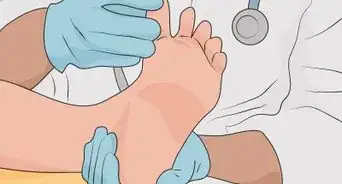
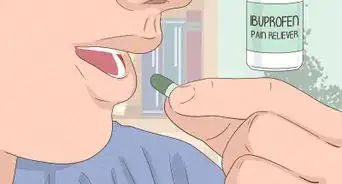
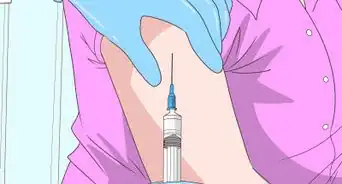

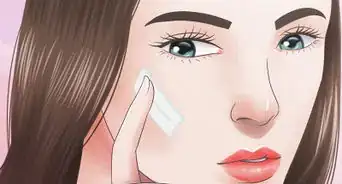
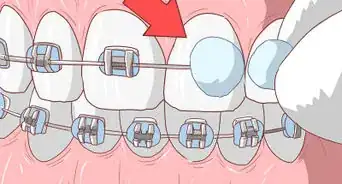


















































Medical Disclaimer
The content of this article is not intended to be a substitute for professional medical advice, examination, diagnosis, or treatment. You should always contact your doctor or other qualified healthcare professional before starting, changing, or stopping any kind of health treatment.
Read More...